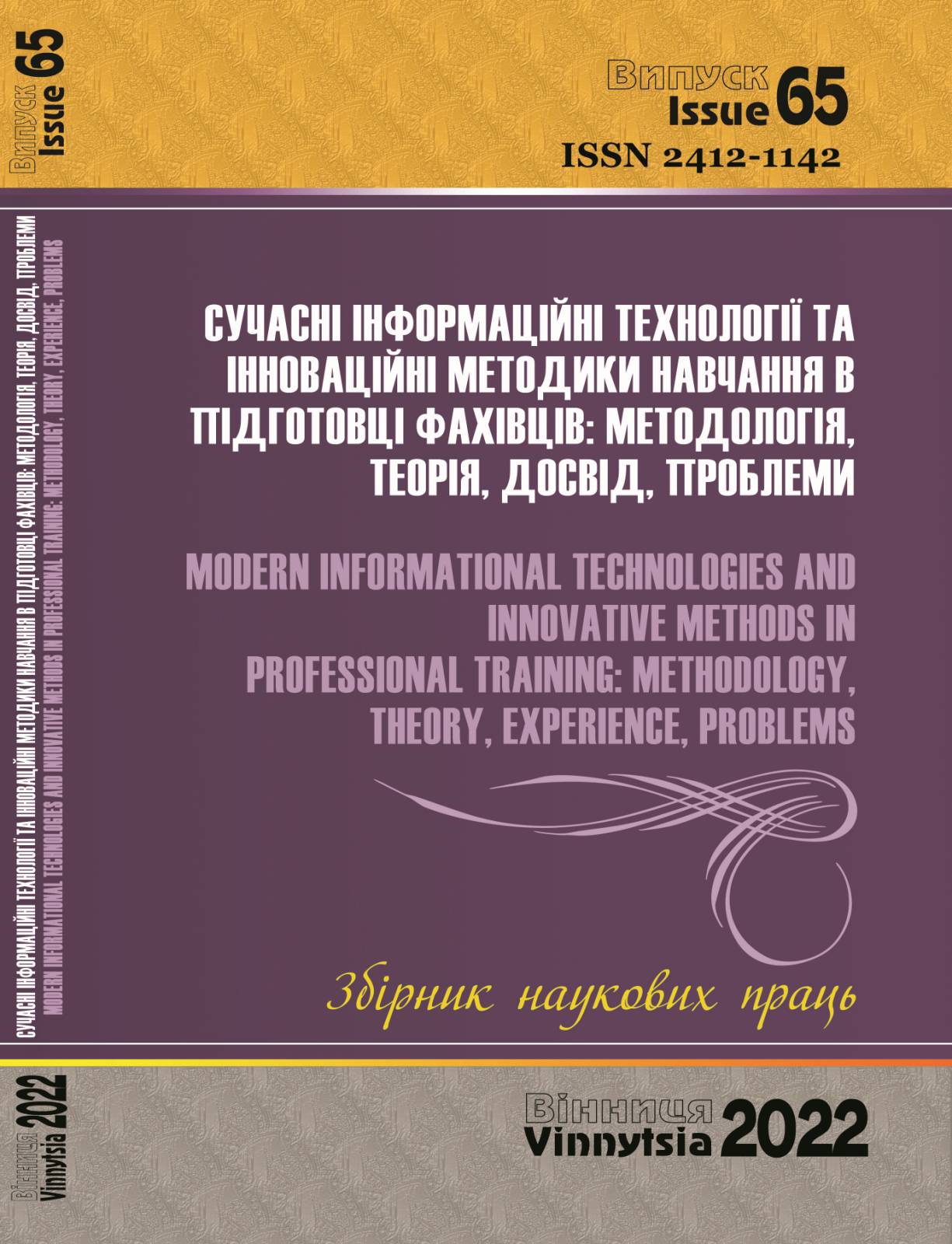ELEMENTS NEWTONIAN COSMOLOGY IN THE EDUCATION PUPILS OF THE PHYSICS AND MATHEMATICS PROFILE OF STUDY
DOI:
https://doi.org/10.31652/2412-1142-2022-65-89-102Keywords:
high school, physics and astronomy, cosmological principle, size and age of the universe, cosmological models and their types, advanced study, elementary derivationAbstract
The basis of modern cosmology is the general theory of relativity, the mathematical
apparatus of which is quite complex. There is a problem of presenting the elements of modern
cosmology in a form acceptable for students to perceive. On the one hand, this presentation should
correspond to the mathematical apparatus provided and learned at school, on the other hand, it
should form the appropriate cognitive-research component of physical and mathematical education.
The article based on Newtonian theory and cosmological principle, to propose a method of
construction and presentation of the elements of the theory of cosmological models of the evolution
of the universe to students of senior classes of a specialized level of education in a general secondary
school. Qualitative methods of classical mechanics are used on a simple mathematical basis. The
mathematical apparatus consists of elementary algebraic operations and transformations. The
proposed derivation and research correspond to the physical and mathematical level of knowledge of
high school students of a specialized level of education. The cosmological principle is analyzed in
detail and the correctness of using the Newtonian approach is substantiated. An elementary
derivation of the equations of spherically symmetric models in cosmology on the simple basis of
Newtonian mechanics is proposed. Equations of the evolution of the cosmological Newtonian model
are constructed and conservation laws, the size and age of the Universe are studied. A qualitative study of the spherically symmetric dust cosmological model is presented. The practical significance
of the research lies in the expansion the possibilities of forming the cognitive component the training
of high school students of the specialized level physics education. The presentation of the material
on the topic «Elements of Cosmology» using this approach becomes clearer, contributes to a better
understanding of the basics of cosmology by students, such basic concepts as the cosmological
principle, the radius and age of the Universe, the critical density of the Universe, the types of
Universe evolution. This approach can be used in senior classes of specialized secondary schools,
group work and optional classes in physics and astronomy, when studying the elements of the theory
of cosmological models and considering the simplest consequences of their implementation.
Pedagogical skill and methodical capabilities of the teacher are also increasing.
Downloads
References
«Астрономія» (рівень стандарту та профільний рівень), навчальна програма для загальноосвітніх
навчальних закладів (авт. кол. під керівництвом Яцківа Я. С.). URL: https://bit.ly/3qBBEi5
Климишин, І. А., Крячко, І. П. (2002). Астрономія: Підручник для 11 класу загальноосвітніх
навчальних закладів. Київ: Знання.
Сиротюк, В. Д., Мирошніченко, Ю. (2019). Фізика і астрономія (рівень стандарту): підруч. для 11-го
кл. закл. заг. серед. освіти. Київ : Генеза.
Пришляк, М. П. (2011). Астрономія: 11 кл.: підручник для загальноосвіт. навч. закл.: рівень
стандарту, академічний рівень / за заг. ред. Я. С. Яцківа. Xарків: Вид-во «Ранок»
Фізика і астрономія (рівень стандарту) для 11 класу (2019) / Головко М. В., Крячко І. П., Мельник
Ю. С., Непорожня Л. В., Сіпій В. В. Київ. Педагогічна думка.
Засєкіна, Т. М., Засєкін, Д. О. (2019). Фізика і астрономія (профільний рівень, за навчальною
програмою авторського колективу під керівництвом Ляшенка О. І.): підруч. для 11 кл. закладів
загальної середньої освіти. К. : УОВЦ «Оріон».
Головко, М. В., Крячко, І. П. (2018). Астрономія: навчальний посібник. Київ: ТОВ «КОНВІ ПРІНТ»
(профільний рівень).
Пришляк, М. П. Кравцова, О. М. (2019). Астрономія (профільний рівень, за навчальною програмою
авторського колективу під керівництвом Яцківа Я. С.): підручник для 11 кл. закл. загал. серед.
освіти. Харків: Вид-во «Ранок».
Крячко, І. П. (2018). Методика навчання астрономії в старшій загально-освітній школі. Київ:
Видавничий центр «Наше небо».
Климишин, І. А. (2014). Основи космології. Івано-Франківськ: Симфонія форте.
Климишин, І. А. (2015). Елементи космології. Івано-Франківськ : Симфонія форте.
Парновский С. Л., Парновский А. С. (2013). Введение в современную космологию. Киев: Наукова
думка
Downloads
Published
Issue
Section
License
Copyright (c) 2022 Валентин Гладуш , Варфоломій Савчук , Андрій Турінов

This work is licensed under a Creative Commons Attribution 4.0 International License.

